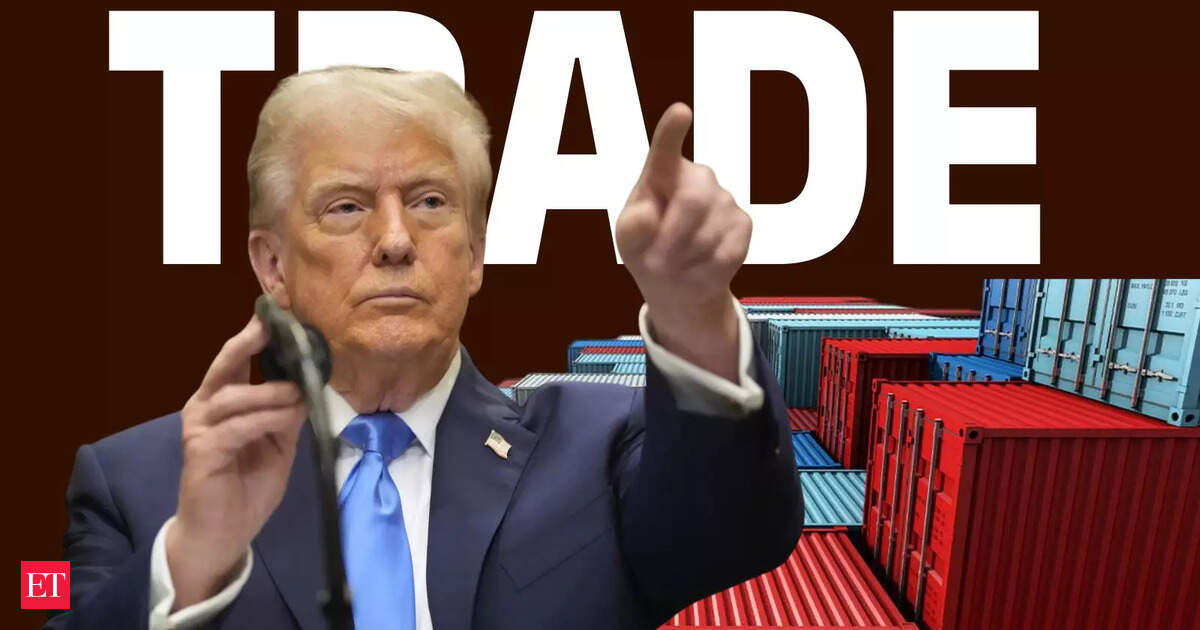While U.S. President Donald Trump is shaking the global economic order by erecting steep tariff walls, the rest of the world, particularly Asia and Pacific, must scale them down to tackle Trump tariffs. Countries in Asia-Pacific have so far largely escaped the impact of tariffs imposed by the Trump administration but the second half might be worse. But there are ways to blunt the impact of tariffs. The latest Regional Economic Outlook by the IMF sounds a warning note as well as suggests measures that can moderate the risks for these countries.
“Regional economic growth in the first half of 2025 benefitted from strong exports, partly due to frontloading in expectation of higher tariffs, and a buoyant tech cycle,” says the report. “Monetary and fiscal policy easing further supported domestic demand in the region, amid globally accommodative financial conditions and US dollar depreciation.”
But the stronger-than-expected outcome in the first half of the year may not repeat in the second half of the year. “Asia’s GDP growth is expected to moderate somewhat in the second half, resulting in modestly lower annual growth of 4.5 percent in 2025 compared to 4.6 percent in 2024. Regional growth is projected to slow further to 4.1 percent in 2026, given the building negative effects of higher US tariffs and headwinds to medium-term potential growth. Risks to the regional outlook are tilted to the downside.” the report says.
“While tariffs are lower than announced in April 2025 and tentative new trade deals are emerging, the full negative effect of the tariff increases is uncertain and the intensification of trade tensions continues to be a major downside risk for the region. While trade policy uncertainty has declined. While trade policy uncertainty has declined somewhat compared to April, it remains high and could weigh on investment and sentiment more than expected. Live Events
Live Events
What Asia must doThe IMF urges Asia to lower non-tariff barriers and integrate regional trade to reduce its vulnerability to U.S. tariffs and global financial shocks. Trade has been central to Asia’s economic growth with China serving as the supply chain hub for goods production across the globe, which makes it vulnerable to the hit from U.S.-China trade tensions.Trade friction with the U.S. and an investment boom in artificial intelligence have led to rising intra-regional trade in Asia, the report said. Promoting further regional trade integration, including by removing trade barriers, could help Asian countries diversify export markets, reduce costs and offset some of the headwinds from the tariff shocks, it said.
“If Asia integrates more within the region, that itself provides you a buffer against external shocks,” Krishna Srinivasan, director of the IMF’s Asia and Pacific Department, told Reuters. Asia is highly integrated in intermediate goods trade, with about 60% of total exports made within the region, Srinivasan said. By contrast, only 30% of final goods exports by Asian countries are made within the region – a sign of the region’s reliance on U.S. and European markets, he added.
The report said Asia can benefit from pursuing broader-based trade agreements, such as one seen in the European Union, as its current focus on bilateral agreements create overlapping rules and inconsistent standards. Lowering non-tariff barriers, which increased during the COVID-19 pandemic and remain pervasive in Asia, could deliver sizable benefits, it said. In fact, some countries are voluntarily reducing non-tariff barriers as part of trade negotiations with the U.S., which is a “very positive” trend, Srinivasan said. With greater regional trade integration, Asia could see gross domestic product rise by as much as 1.4% over the medium term, and the Association of Southeast Asian Nations economies by as much as 4%, Srinivasan said.
What India must do
Earlier, in an interview to ET, Srinivasan said India already has a strong macroeconomic policy framework and is maintaining fiscal discipline while inflation is easing. But India needs strong structural reforms and the current trade tensions provide an opportunity for trade liberalisation.
“To compete globally, India must scale up and become more competitive,” he said. “Flexible labour laws are needed – they have been announced, but implementation remains uncertain. Regulatory streamlining, or what we call “regulatory cleanup,” is also essential, as many regulations exist without clear purpose. Strengthening insolvency frameworks and judicial capacity is equally important. These may seem secondary, but they are crucial to unlock private sector potential.”
Srinivasan said current tariff challenges present an opportunity for trade liberalisation which the IMF had been advocating even before Trump tariffs. “India’s bilateral trade agreement with the UK is a good example of progress. Similar deals with the EU and Australia will help diversify both export and import markets. Currently, India is quite exposed to two regions, particularly the US. Diversifying export and import markets is important. Liberalising trade through bilateral or plurilateral agreements – it doesn’t have to be multilateral – can help. India could also consider joining the CPTPP (a free-trade agreement between 12 countries, including Australia, Japan, Canada, Mexico and the UK). These are viable paths toward trade liberalisation,” he said.
Keeping in view three factors — stronger Q2 growth, tariff impact and GST support — the IMF has raised its forecast for India’s GDP in 2025-26 to 6.6%. “For next year, we have lowered the forecast to 6.2%, assuming that the 50% tariffs introduced in August remain in place. If India negotiates a deal to reduce these tariffs, there will be an upside risk to growth. After that, we expect growth to return to around 6.5% over the medium term,” he said.
(With agency inputs)

